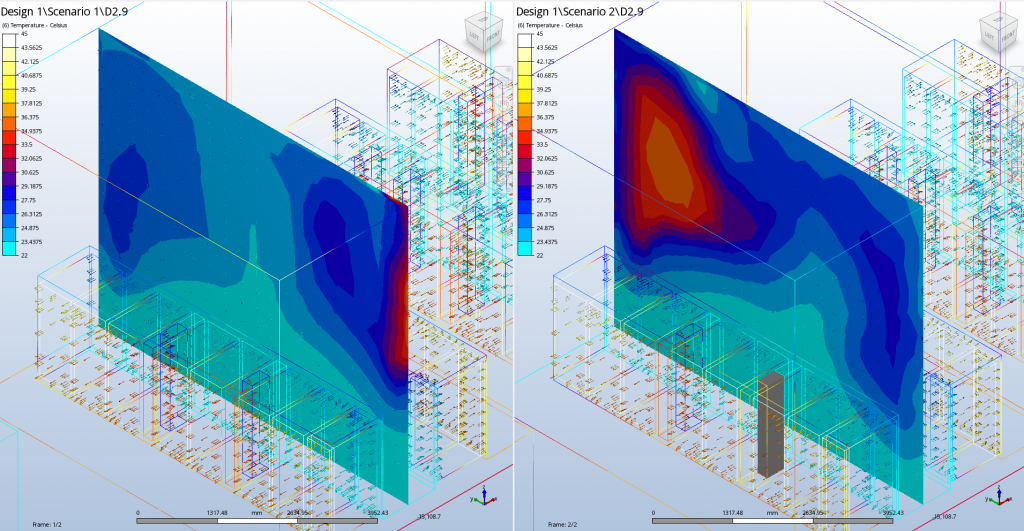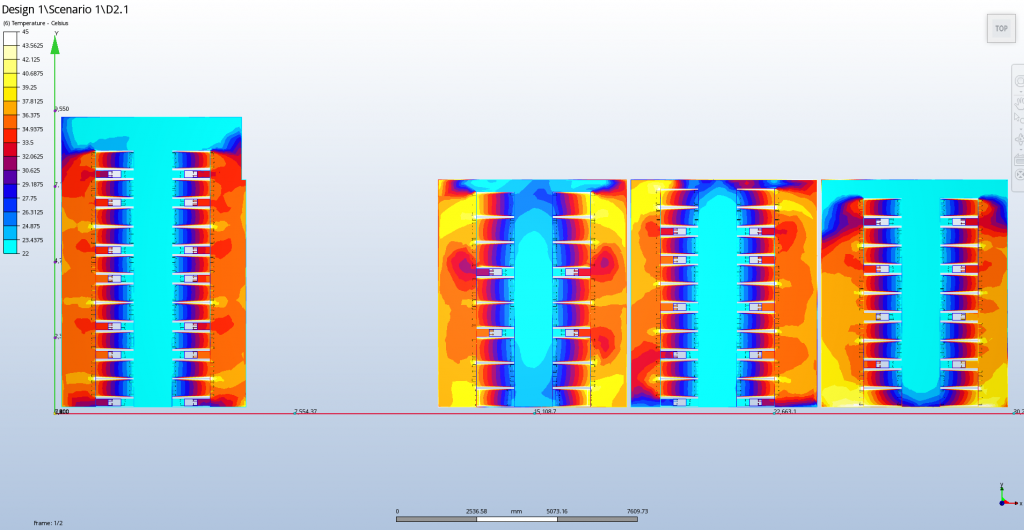STEP LOGIC expands expertise in cutting-edge technologies for designing the utility systems of data processing centers
June 20, 2018, Moscow STEP LOGIC is expanding its competencies in designing the utility systems of data centers by making use of CFD simulations for thermodynamic processes through the use of the Autodesk® CFD software package. The finite element method, used in CFD modeling, ensures the level of reliability and accuracy that can only be achieved in full-scale experiments.
STEP LOGIC specialists took an in-depth course in Autodesk® CFD and were certified as power users of the software. The company's department of utility systems employs several focus groups specialising in such fields as BIM, IoT, IIoT, smart buildings etc. In total, the employees of the department have over 200 diplomas and certificates confirming the high competencies of STEP LOGIC in designing utility systems and installing them at facilities of any level of complexity.
"Expanding expertise by using CFD modeling in design is our company's response to the current demands of the rapidly changing market. For us it is vital that we remain at the cutting edge of technology and always offer our customers the most innovative and most reliable solutions. Today, there is no other empirical mathematical model based methodology that can rival CFD-modeling of processes in terms of high accuracy. In effect, CFD modeling offers you a virtual test laboratory in which you can trial all the operating modes of the utility systems of a data processing center with an extremely high degree of accuracy," comments Yuri Batyzhev, head of the Department of Utility Systems at STEP LOGIC.
Autodesk CFD is a powerful computational system for accurate and flexible modeling of the climatic processes of facilities of different kinds, that takes into account ventilation, air conditioning, and heating. Mathematical modeling at the design stage makes it possible to identify the weak spots and possible vulnerabilities very early, which guarantees the reliability of the systems being designed. The compliance of Autodesk CFD® 2018 to the state standards and construction regulations is confirmed by a certificate issued by the Federal Agency for Technical Regulation and Metrology.
The use of this technology helps optimise the air conditioning system and increase its efficiency, providing reduction in running and electricity costs. In addition, CFD modeling can be used not only for data centers and server rooms but in a wide variety of other projects and facilities. For example, CFD modeling can help estimate the wind loads on buildings and structures, optimise the climate control systems of buildings that have an atrium and large glazing areas, as well as estimate the amount of smoke that will be flowing into different parts of the building in the event of a fire.
In the first months that the company's been deploying Autodesk CFD STEP LOGIC specialists have already successfully modeled and got practical results for customers for a number of key projects:
-
0.9 MW air conditioning systems for data processing centers with two types of cooling architecture (cooling systems installed between the isles with and without the insulation of corridors);
-
the air and heat screen for an aviation hangar with gates 58 meters wide and 11 meters tall;
-
the air conditioning system for the UPS room at the NTV TV centre that has equipment totaling 4MW in power;
- the ventilation system for 200 climate boxes for the WiFI hot spots for the FIFA 2018 fans festival taking place at the Moscow State University campus.


Visualisation and analysis of the operation of the air conditioning systems of data processing centres